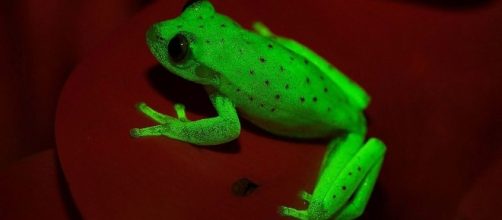The report, carried out by scientists from the National Council of Scientific and Technical Research (CONICET) and the University of Buenos Aires, together with Brazilian biologists, shows how the Hypsiboas Punctatus, small frogs with translucent skin that produce a protein that gives them fluorescence natural.
The researcher, Dr Carlos Taboada, began his study following his doctoral thesis on amphibians, in which he focused on the chemical components that cause the natural fluorescence of some animals and plants. "Finally what happened was that when we went to look for that fluorescence, we observed that there was a green fluorescence much more intense than we had imagined or we could ever think," he said.
The fluorescence of amphibians.
Although they initially suspected that the most prominent fluorescence was red, they soon discovered that it was green, biliverdin, as Taboada declared, the most prominent fluorescent emission in these small, peculiar amphibians. These frogs, which abound in different parts of the South American continent, already known of its existence, but its ability to glow naturally has been discovered when illuminated with ultraviolet light A and blue.
The place of origin of this type of frogs is still unknown but known that they exist in much of South America, mainly in Venezuela, Brazil, Ecuador and Argentina. The location chosen by the experts of Conicet for the study was the Argentine province of Santa Fe (centre), where they entered the vegetation to verify that it is during the twilight when these frogs increase the intensity of its brightness.
Completely a mystery.
"In plants, this compound does not flower, so it has other rather physicochemical properties. In addition, what we do not know is where these compounds come from, what is the synthetic route through which in the frog we end up having these compounds, "said Julian Faivovich, another of the researchers.
Faivovich stressed that this Finding "opens many possibilities for different scientific specialities".

